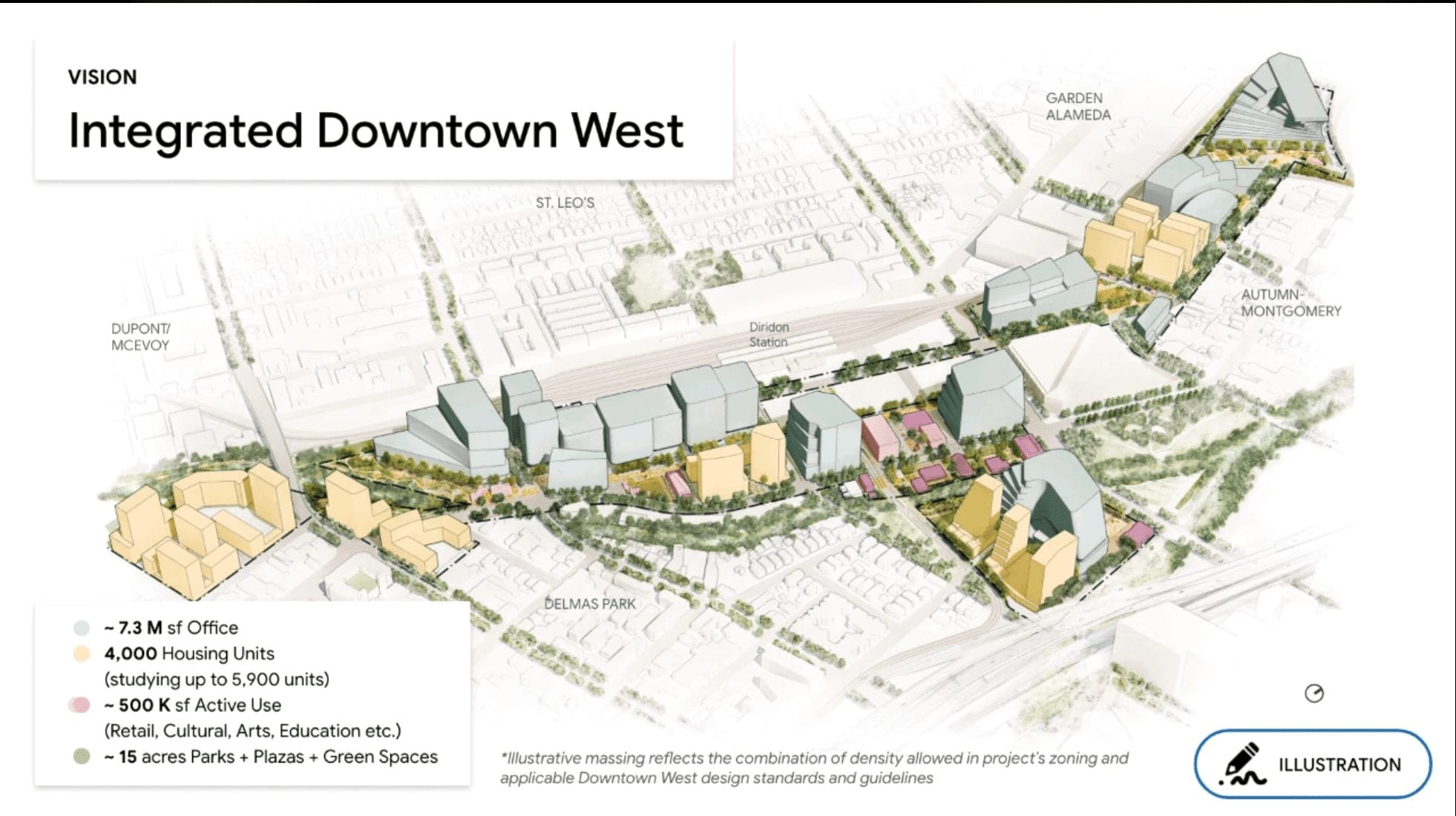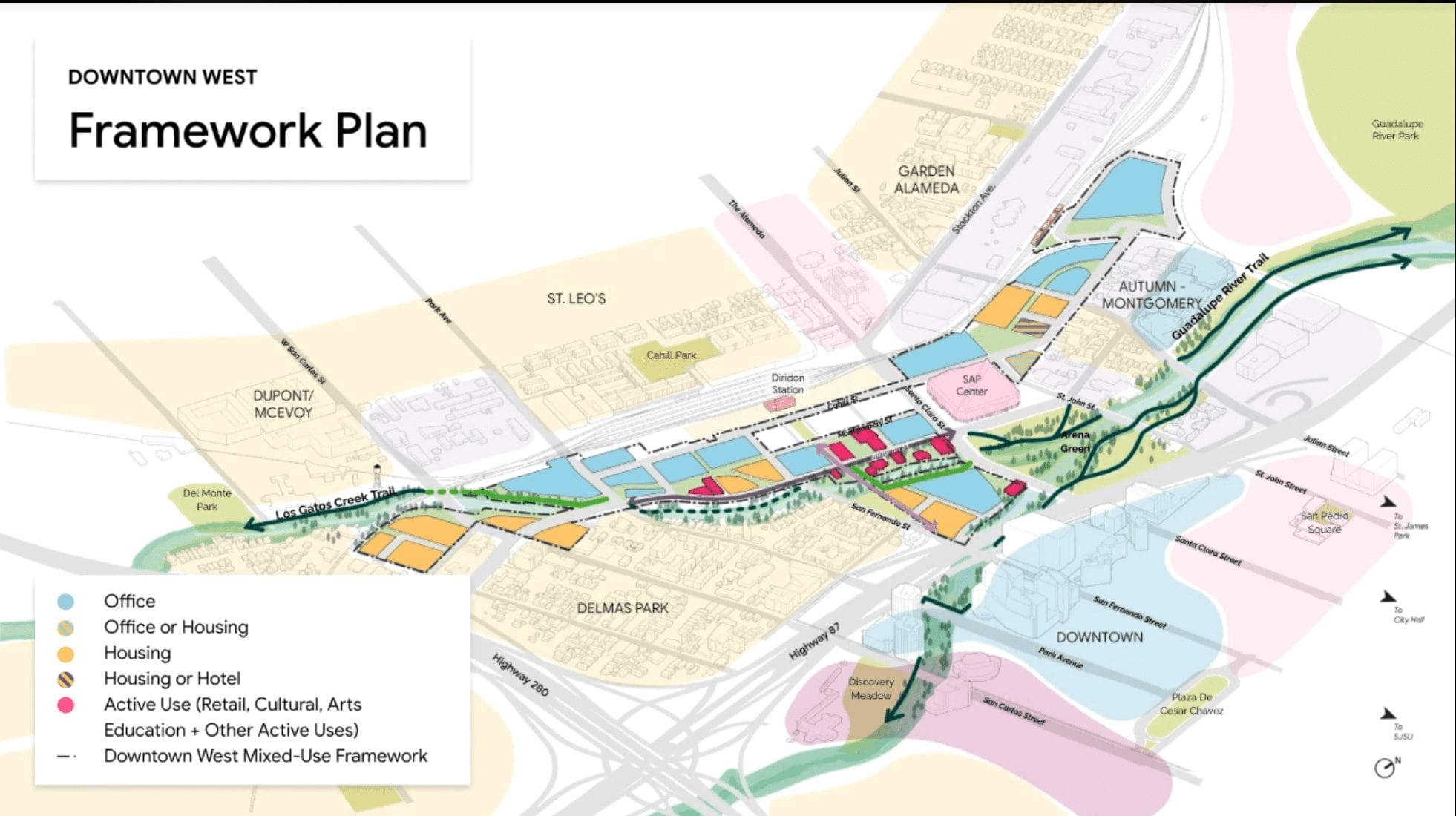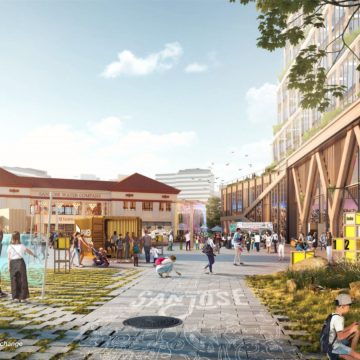San Jose revealed scads of new details about Google’s plans to build a sprawling downtown campus with 7.3 million square feet of office space and 4,000 housing units spread out over more than 80 acres with improvements to public amenities, including 10 parks and the trails that will eventually connect them all.
San Jose Downtown Association Executive Director Scott Knies said the project represents a “higher level of design development than the city has ever seen before.”
Development expert Bob Staedler, principal executive at Silicon Valley Synergy and a columnist for this news organization, praised Google’s pledge to make 1,000 of the project’s housing units affordable.
“They will be good stewards and work toward the 25 percent affordable goal,” he said.
As part of a public comment process, the city released hundreds of pages in two documents on Oct. 7. The first, an environmental impact report (EIR), examines the effects the project will have on air and water quality, energy use, greenhouse gas emissions and other environmental concerns.

The second document, Downtown West Design Standards and Guidelines (DWDSG), which is more than 470 pages long, contains a wide array of design specifications and illustrations that paint a vivid portrait of what the tech giant has planned for the future of downtown.
The project will transform the face of the city, and officials say San Jose has been partnering with Google to develop the property in a way that best serves the public interest.
“Particularly amid all the challenges of this pandemic, I’m grateful for the persistent collaboration between Google and city staff to enable our community to benefit from thousands of jobs, affordable apartments, vibrant retail and restaurants, public plazas, and park space,” said Mayor Sam Liccardo.

Trying to parse the details of the 1,350-page EIR, which was posted on the city’s website, is like “drinking from a fire hose,” Staedler said.
Nevertheless, Staedler told San José Spotlight the start of the public comment process on the document is an important step forward for the project.
“This is the beginning of a myriad of Google items that will go to the council between now and the end of the year,” Staedler said, noting a handful of committees will meet and take public comment on the project before the council is asked to approve it in 2021.
“Google listens to community input and they actually want to be partners with the community,” he added.
The company echoed that sentiment. Indeed, the draft EIR is the product of a long process of public engagement.
“We’re excited about this next step in our project, which incorporates feedback from thousands of people over the last two years and provides another opportunity for community input,” Alexa Arena, Google’s development director for San Jose, said. “We continue to hear that housing and preserving affordability is a priority for San Jose and our proposal offers more affordable housing, job pathways and community spaces for San Joseans.”
Knies noted Google is planning a development that belongs in San Jose’s downtown.
“This is an integrated, mixed-use development that fits in its community,” Knies said. “It’s a city within a city.”
And that’s just what its designers intended.
“Downtown West is designed to be a true part of the city — the opposite of a traditional corporate campus,” said Laura Crescimano, founder SITELAB urban studio, the project’s designer.
“Our team worked with Google to draw on the uniqueness of the location to propose a place where urban life and nature can coexist. We’ve brought together new and historic buildings, opportunities for arts and culture, playful spaces and moments of respite along the creek,” Crescimano said. “The draft design standards and guidelines published today set out the roadmap for a resilient and connected Downtown West.”
At the same time, Knies said the Google campus sets a new standard for development that he hopes to see flourish there and spread to other parts of the city.
“People are going to be really excited about this project and about what it can do in terms of raising the bar for development in San Jose and in terms of knitting together the downtown core with downtown west,” Knies said.
Meanwhile, city officials say San Jose is eager for more input from the public based on the latest plans.
“We now have updated, more specific information to share and welcome the continued public feedback that will shape the project to reflect our community’s needs and aspirations,” said Deputy City Manager Kim Walesh.
The public review period for the EIR ends Nov. 23 at 5:00 p.m. The city asks for comments in one of the following ways:
- Send e-mails to Shannon Hill, the Environmental Project Manager, at [email protected]
- Send letters to Shannon Hill, Planner III, Department of Planning, Building, and Code Enforcement, 200 E. Santa Clara Street, T-3, San Jose, CA. 95113.
Contact Adam F. Hutton at [email protected] or follow @adamfhutton on Twitter.





